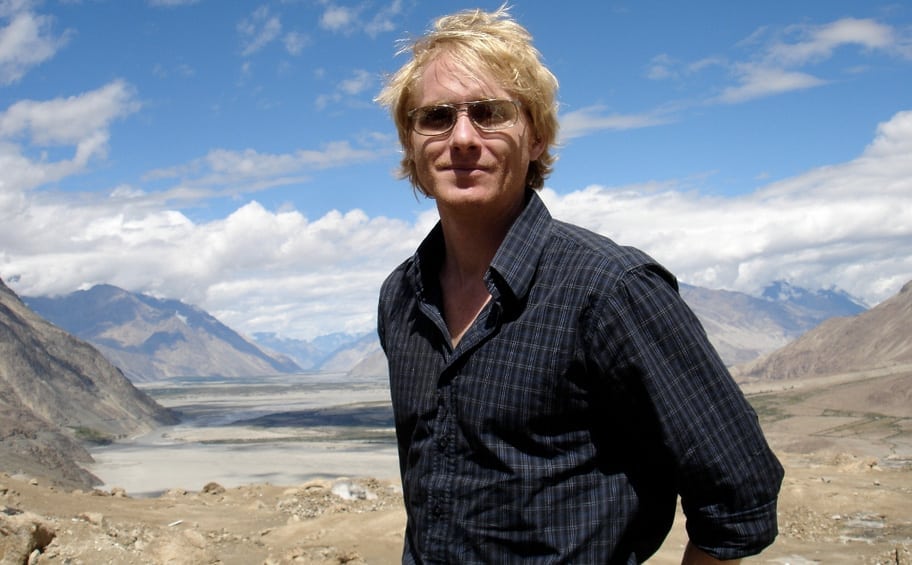Dr. Venkat Natarajan’s Frugal Innovation Program is Intel’s answer to a lazy habit among multinational corporations of treating product design for developing countries as a second thought. Historically, when designing products for an under-served market, many companies simply stripped down the things they already sold in the West to lower their price. At Intel Labs in Bangalore, India, however, Natarajan leads a team of researchers developing technologies that meet Indian needs, and also happen to cost very little.
Natarajan has eight patents, more then 25 publications and a PhD in Mechanical Engineering from Carnegie Mellon University, Pittsburgh, Penn. His focus is on energy production. Last year, he presented his research into snap-on bicycle-powered generators at IEEE’s Global Humanitarian Technology Conference in Seattle, Wash (see our coverage of promising prototypes at GHTC here). The designs developed in his lab have the potential to serve hundreds of millions of people in emerging markets worldwide. And, he says, in a twist on the old model, frugal innovations could even appear on store shelves in the West. These are five questions with Venkat Natarajan.
E4C: What is your “elevator-ride,” explanation of your job when people ask?
VK: As part of Frugal Innovation team in Intel Labs, we explore ways to significantly improve the quality of life for underserved populations & under-penetrated markets via innovative computing technologies, novel sensing techniques, energy solutions etc. My specific research focus is to bring computational intelligence to address the energy problem in the world.
As most of the readers know, energy independence remains one of the grand challenges in the world. Hundreds of millions of people live without basic electricity in poor countries. For example, in India alone, we have approximately 400M people that do not have access to basic power. Again, even those that have access to electricity are faced with a highly unreliable power grid incurring heavy cost for back-up power (e.g. diesel). I explore ways to solve the energy crisis by intelligent energy conservation and management, making the smart grid a reality and developing novel distributed low-cost energy solutions.
E4C: What is one thing that people either don’t know, or don’t understand about frugal innovation, especially in India?
VN: Frugal innovation means developing innovative products under extreme constraints of low-cost, but, with good-enough value to the consumer. There are two myths about frugal innovation that I would like to bust:
1. Frugal innovation is essentially a buzz-word for a simple cost reduction of existing products.
The purpose of Frugal innovation is to cut the product cost, not by a mere 25-30 percent, but to a dramatic one-tenth of the original cost. This is because the affordability levels in poorer countries are significantly low. Hence, products need to be frill-free and be just good-enough. Frugal innovation involves rethinking the entire product cycle to define new requirements, production processes and business models. The engineering and design process for frugal innovation requires the development of sophisticated multidisciplinary optimization techniques and fast, accurate design tools while leveraging existing technologies and market channels to reach the consumer.
2. Frugal innovation is a localized phenomenon and is unlikely to scale and create new market opportunities in the developed countries.
Historically, companies waterfall their products for newer markets such as India and China. Now, with the emergence of organized local innovation to solve local problems and needs, multinationals are beginning to take innovations originally for poorer countries and scale them up for broader worldwide consumption. This process, known as reverse innovation, will be a major factor for successful companies in the future.
E4C: What is one of the promising trends that you see in frugal innovation?
VN: I believe that frugal innovation is slowly, but steadily, gaining broad acceptance as a critical business strategy worldwide. We are beginning to see the impact of frugal innovation through innovative computing products, innovative healthcare products, low-cost transportation etc.
E4C: What has kept you awake at night or has simply worried you about your work?
VN: About a decade ago, technology development had a single-point focus to expand product features for customers of the developed world. In other words, the focus was on developing new products for old markets. However, with the advent of frugal innovation globally in the last couple of years, consumers in poorer countries are beginning to have access to products and solutions to improve their quality of life. However, I believe that we still need a significant increase on the level of investment and efforts from companies to solve the hard problems in countries such as Africa, BRIC nations, etc.
E4C: Five years from now, what improvements would you like to see in the technology that you use?
VN: I would like to see a big jump in the number of people worldwide who have basic electricity access. To achieve this goal, we need major advancements in conservation, storage and generation of energy. We need to conserve energy through the broad adoption of demand-side-management techniques and energy-efficient energy transmission/distribution. We need to see large grid-connected battery systems that are inexpensive, but reliable, to efficiently store energy. Finally, we need to accelerate the development of distributed renewable power generation to reach at least a 30 percent contribution of renewable power to the total installed capacity.

